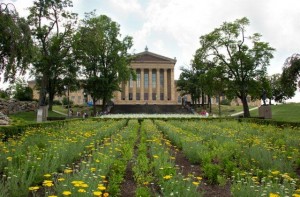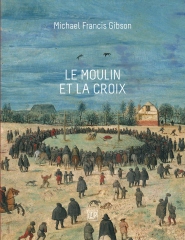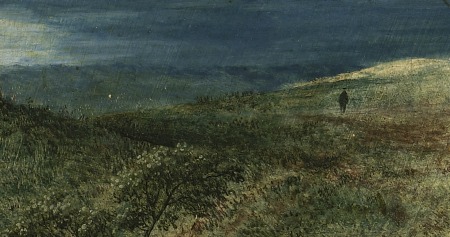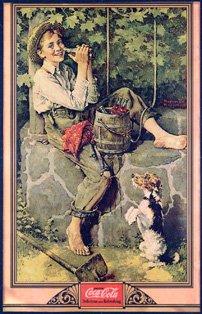The New Barnes (that’s what I think we should all call it, not just the Barnes) isn’t the only new artistic attraction in Philadelphia.
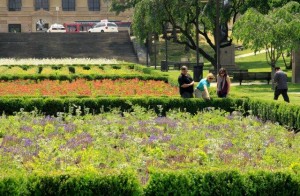 The Philadelphia Museum of Art has finally executed plans designed by Sol Lewitt some 30 years ago for a garden in Fairmount Park. It features more than 7,000 plantings, arranged within four flower beds and in four colors, and is called Lines in Four Directions in Flowers. This work was commissioned by the the Fairmount Park Art Association; Lewitt chose the site — Reilly Memorial of Fairmount Park along the banks of the Schuylkill River near the museum’s new Anne d’Harnoncourt Memorial Sculpture Garden.
The Philadelphia Museum of Art has finally executed plans designed by Sol Lewitt some 30 years ago for a garden in Fairmount Park. It features more than 7,000 plantings, arranged within four flower beds and in four colors, and is called Lines in Four Directions in Flowers. This work was commissioned by the the Fairmount Park Art Association; Lewitt chose the site — Reilly Memorial of Fairmount Park along the banks of the Schuylkill River near the museum’s new Anne d’Harnoncourt Memorial Sculpture Garden.
OLIN, the landscape architecture, urban design and planning studio that has also designed plans for the renovation of the Metropolitan Museum’s outdoor plaza on Fifth Ave., among other things, was hired to execute the plans. Susan Weiler, the OLIN partner in charge, told WHYY that Lewitt basically left a drawing, 24 by 18, “with very little description of what it was but a summary of the intent.” Museum director Timothy Rub added that Lewitt “said  ‘Do lines in four directions in four colors, white, yellow, blue and red,’ and he adds, in order to figure out how to do the garden, consult a competent horticulturist…I think he had no idea of how complicated this would be.” (That WHYY link, btw, includes a slideshow.)
Each of the four beds within the garden measures 4,320 square feet (80’ x 54’), resulting in a lot size totaling 17,280 square feet (nearly one-third the size of a football field). In total, the four colored quadrants contain more than 7,000 plants. Each color palette contains four to five species that bloom sequentially, with the lowest flowers blooming first. This pixelation of heights allows the negative space to be as impactful as the positive space—an extremely important factor to LeWitt.
Framed by a Green Mountain Boxwood hedge, flowers within each color palette are as follows (by common plant names):
– White: Bellflower, Guara, Obedient Plant, White Coneflower, Phlox ‘David’
– Yellow: False Indigo, Perennial Sunflower, Yellow Coneflower, Yarrow
– Red: Red Yarrow, Blanket Flower, Red Sage, Cardinal Flower, Red Avens
– Blue: Great Blue Lobelia, Russian Sage, Sea Holly, False Indigo, Woodland Sage
The firm studied Lewitt’s writings and used a computer algorithm to figure things out.
As someone who loves gardens and occasionally writes about them here, you can imagine that I love this project. It will be on view “over the next two years,” OLIN said. Then what? I don’t know. OLIN didn’t say, and the Philadelphia Museum had no information on its website, oddly.
Photo Credits: Courtesy of OLIN

